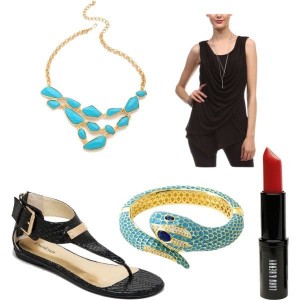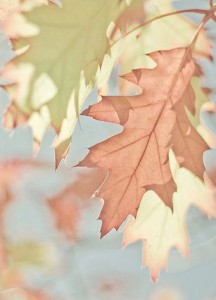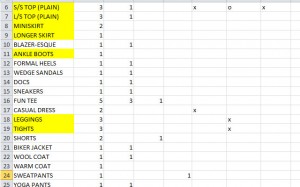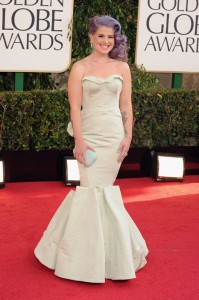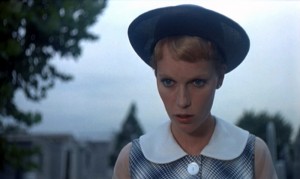3/15/2020: I have written an updated version of this post.
How much we should stick to the height requirements when trying to find our Kibbe Image Identity by ourselves is a hotly debated topic in the Kibbe community. How much we should stick to the requirements when there are verified celebrities who fall outside of the range? Some take the approach of basically ignoring height completely. While I don’t think it should be completely rigid, I don’t really agree with this approach.
Height indicates scale. Types for taller heights wear larger things, and vice versa. So as a rule of thumb, chances are very high that you’ll end up in a type indicated for your height. I’d like to address a few questions about height that come up frequently, and answer them as I understand them.
1. [Celebrity] was put in [type] by Kibbe, and she [taller/shorter].
First off, I think we have to remember that when Kibbe wrote the book, he wasn’t thinking that in 30 years time, hundreds of women would be sitting around making spreadsheets about the height and bra size of every single celebrity. That kind of information wasn’t available back then on the level it is now. The celebrities he chose are meant to evoke a certain mental image and to give you an idea of what the type is like, not serve as the parameters of a type.
I think that he did knowingly do things like put celebrities over 5’5″ in FG. As a model, it was obvious that Twiggy was on the taller side. But she was so FG otherwise that it didn’t matter. And we do have real-life examples of FGs going up to 5’8″. (But I don’t think you could really get taller than that and not have your height be the most striking element of your appearance.) We also have the modern example of Christina Hendricks being Romantic. Christina is 5’7″, but she is absolutely “curves first.”
Sorry, nothing found.
(Sources: 1, 2)
Basically, I think that if you are going to fall into a type where your height doesn’t fit, you need a really solid case otherwise. You need to be renowned for your angularity and mixed facial features to be a tall FG, or be famously curvy and clearly lacking SD’s D base to be a tall R.
2. I live in [country], where average height is [taller/shorter] than the US.
If we start making different charts for every country or group of people in the world, we’ll give ourselves a giant headache! But it’s not just laziness on my part. This is an easy one. If you live in a country with a lot of taller people, you’ll find more of the taller types. And vice versa. A Soft Gamine in New York City will be a Soft Gamine in Timbuktu. At 5’4″, there are countries where I would be maybe considered almost tall. But it doesn’t change the compact impression I give off.
3. People have gotten taller since the 80s.
This is probably true. But again, I would say that this means that, with more women who are taller with broader bone structures and larger feet, the taller types are simply becoming more common. It’s not that short people don’t exist anymore, even if it is harder now to find our tiny shoes!
So what should you do when it comes to height? I would look at the types that your height qualifies for first. If they all seem off, then I would begin to seriously consider the others. Are you a Twiggy or an Audrey who needs broken lines despite being tall? Are you a taller woman for whom SD just isn’t yin enough?
The requirements in the book represent the general tendencies you’ll see within a type. You can differ from the book description… as long as it doesn’t upset your yin/yang balance. For instance, I have a small waist, hands, and feet. My waist doesn’t need to be shown at all, and in fact, true waist emphasis isn’t flattering on me at all. My hands and feet don’t look delicate. They just look compact. So none of these things are enough to pull me out of FG. Height is the same. If your height truly doesn’t affect how the recommendations work on you, then you may be able to fit into a type outside of your height range. (But I think this happens less often than we think.)
I leave you with Mae West, a 5’0″ woman that Kibbe as mentioned as being SD. Bigger for her was certainly better, even if she was about half a foot shorter than the average SD. But she was truly an exception—which is why she made such a strong impression that we’re still talking about her, and a “Mae West type” is still a term that has meaning.
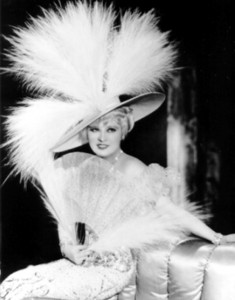
(Source)
